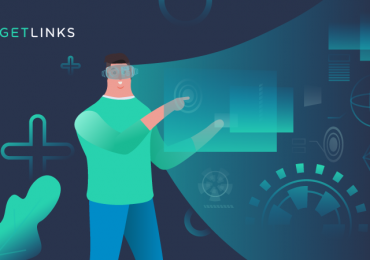How is the New Normal changing the future of HR?

Human Resources (HR) matters to every company to recruit the best-fitting talents to join the company. However, since the worldwide spread of COVID-19, it has affected us in so many ways including the HR process of recruitment. This uncontrollable circumstance inevitably pushes us into more online connections. We have to adapt our life into it, so does recruitment.
How does the New Normal affect the company and recruitment?
While people have to adjust themselves to the new way of living, many companies or organisations also are forced to restructure their workforce to the new normal to survive. Due to the pandemic effects, remote work is now an alternative for the workforce or a permanent solution for some companies. This is an extensive transition that the company and employees have to work out together.
Moreover, many businesses are inclined to reduce costs by replacing their full-time employees with contingent workers as a cost-saving measure.
What does this mean? It does mean that this’s a chance of hiring and gathering more potential employees with efficiency.
In addition, HR has to evolve across the traditional ways of recruitment to reach out to the company needs and to meet the candidate’s expectations in this new living. Many challenges await to determine the agility of recruitment in the new normal.
How does HR recruitment adapt to work out in the current situation?
It’s not an exaggeration to say that the progress of recruitment will be changed its way from now on. Let’s take a look at how HR should adapt to work out the future of recruitment:
-
- Increase in remote work
According to the Garner poll, data shows that 48% of employees will likely work remotely at least part of the time after COVID-19 versus 30% before the pandemic.
Something is interesting about this, A study from Future Forum that derives from the survey in the U.S., Australia, France, Germany, Japan, and the U.K. indicates that 76% of employees do not want to return to the office for full-time work because they know that they can work from anywhere.
Therefore, increasing remote work operations will be thoughtfully adapted into the workforce. Considering and dealing with this may be difficult but it will provide more agility and flexibility in a company.
-
- Apply to technology and digital transformation
Since this world has been circled by digital solutions to simplify people’s lives, we have experienced a rise in data-driven decision making across all industries including HR. The data-driven decision helps HR to measure employee experience, engagement and satisfaction by monitoring and analysing employee performance. HR can determine the strategy of talent acquisition, develop the management and prepare the workforce.
Moreover, technology seemingly has been applied to simplify our lives. Some companies use technology to help them recruit talented candidates such as AI (Artificial Intelligence), Data Science, or Big Data to partition off talents. All these occurrences are called digital transformation. One good example of technology for recruitment is GetLinks Job Search, an online platform where its AI technology will algorithmically match employers and employees. This online platform apparently saves us time and cost. Candidates have an opportunity to present themselves and HR still discovers better-talented candidates by profiling their profiles registered on a platform.
-
- Expand contingent workers
The economic uncertainty of the pandemic has increasingly concerned employers about hiring employees. Many organisations respond to this impact by hiring more contingent workers for flexibility in workforce management.
On the other hand, unemployed full-time workers have been increasing during the pandemic. Therefore, the quantity of them is much and they are willing to work in any kind of job function.
HR will have to evaluate performance management systems for these workers and determine whether they will be entitled to the same benefits as their full-time peers.
-
- Separate critical skills and roles
Before the pandemic, we viewed the roles with critical skills or capabilities that made a company meet its goals. Now, companies are realising that they can have another category of critical roles to succeed in the workflows.
To produce the new workforce, HR needs to focus less on roles and focus more on the skills needed to drive the company’s advantage and the workflows. Plus, encouraging employees to develop critical skills that potentially open up multiple opportunities for their career path, rather than preparing for a specific next role, offering career development support to employees in critical roles who lack critical skills would be great.
-
- Convert efficiency to resilience
The organisation design used to focus on streamlining roles, supply chains and workflows to increase efficiency which created fragility and had no flexibility to respond to disruption.
Resilient organisations were better to respond. To build a more responsive organisation, we need to re-design roles and structures around outcomes to increase agility and flexibility. Additionally, to formalise the processes.
Finally, HR will possibly provide employees with varied, adaptive and flexible roles so they can acquire cross-functional knowledge and training.
The transition shapes the future of HR in New Normal
The unexpected COVID-19 recedes into the normal that we used to be and it has become the new way of living with the use of technology.
The matter is not about being ready for it, it’s about conversion, adaptation, agility or improvement to survive and efficiently succeed.
For HR, this’s a huge challenge to evolve and transform across all elements of HR recruitment progress to meet a new series of the companies needs and candidates expectations. Recruitment will be relied on more to determine the support for business restructuring by applying technologies or innovations to measure, manage and increase productivity and employee engagement.
What is the New Normal?
To reduce the risk of the virus infection, less direct physical interaction is suggested as the way that we use to protect ourselves. We have converted and adapted our routine regarding the use of technology. For instance, doing video calls to have conversations with family, shopping online instead of going to a shop, or even working remotely. This is a thing that we call the ‘new normal’ – the new way to live during the pandemic.
Sources: Source 1, Source 2, Source 3

